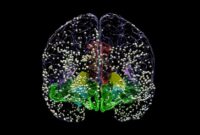Tech cant cure loneliness it causes – Tech Can’t Cure Loneliness, It Causes It. We live in a world where technology is constantly evolving, offering us endless possibilities for connection. But amidst the digital landscape, a growing paradox emerges: technology can both contribute to and exacerbate loneliness.
While it allows us to stay connected with loved ones across vast distances, it can also create a sense of isolation and detachment from the real world. The constant stream of curated content and idealized portrayals of others on social media can foster feelings of inadequacy and disconnect us from the genuine human experiences that nourish our souls.
The allure of the digital realm can be intoxicating, offering instant gratification and a seemingly endless supply of entertainment. However, this constant stimulation can come at a cost. Excessive screen time can interfere with our ability to form meaningful connections, leading to a decline in our social skills and a sense of disconnection from the people around us.
We may find ourselves trapped in a cycle of digital addiction, neglecting real-world interactions and the richness of human connection.
The Paradox of Technology and Loneliness

Technology has become an integral part of our lives, connecting us to information, entertainment, and people across the globe. While it has the potential to bridge geographical distances and foster new connections, it can also paradoxically contribute to and exacerbate feelings of loneliness.
This paradox arises from the inherent differences between real-world connections and online interactions, which can lead to a sense of isolation despite the abundance of virtual connections.
The Dual Nature of Technology
Technology can both contribute to and exacerbate loneliness. On one hand, it can facilitate communication and create opportunities for connection. Social media platforms, instant messaging apps, and video conferencing tools allow us to stay in touch with friends and family, regardless of physical distance.
Online communities and forums provide spaces for people with shared interests to connect and interact. On the other hand, technology can also contribute to loneliness by fostering a sense of isolation and detachment from real-world interactions. Spending excessive time online can lead to neglecting real-world relationships and social activities.
The constant barrage of curated and idealized online personas can create a sense of inadequacy and comparison, further isolating individuals.
The Difference Between Real-World Connection and Online Interaction, Tech cant cure loneliness it causes
The difference between real-world connection and online interaction lies in the depth and quality of connection. Real-world connections are characterized by physical presence, shared experiences, and the ability to perceive non-verbal cues. Online interactions, while offering convenience and accessibility, lack these elements.
While online interactions can provide a sense of community and support, they are often superficial and lack the depth and intimacy of real-world connections. The absence of physical presence can make it difficult to build genuine connections and foster meaningful relationships.
Examples of Technology-Induced Isolation
The pervasiveness of technology has created a culture of constant connectivity, where individuals are constantly bombarded with information and stimuli. This can lead to a sense of overload and distraction, making it difficult to focus on real-world interactions. The constant need to check notifications and update social media feeds can create a sense of anxiety and isolation, as individuals feel pressured to be constantly available and connected.
“Technology can be a powerful tool for connection, but it can also be a source of isolation if it’s not used in a balanced way.”
Learn about more about the process of how to market without marketing department in the field.
Sherry Turkle
Another example is the rise of social media, which can create a sense of isolation by presenting a curated and idealized version of reality. Individuals often present a carefully crafted image of themselves online, which can lead to feelings of inadequacy and comparison.
This can further isolate individuals, as they feel pressured to live up to unrealistic expectations.
The Impact of Social Media and Online Communities: Tech Cant Cure Loneliness It Causes
Social media and online communities have become ubiquitous in our lives, profoundly influencing how we connect, communicate, and perceive the world. While they offer numerous advantages in fostering connections and facilitating information sharing, their impact on our well-being and sense of belonging is complex and multifaceted.
The Potential Benefits and Drawbacks of Social Media for Fostering Connections
Social media platforms provide a vast network of individuals with shared interests, facilitating the formation of online communities and groups. These platforms can connect people across geographical boundaries, offering opportunities to build friendships, engage in meaningful conversations, and share experiences.
However, the potential for fostering connections through social media comes with drawbacks. The constant stream of information and the pressure to present an idealized version of oneself can create a sense of disconnect and isolation. The curated nature of social media feeds often leads to a comparison game, where individuals compare their lives and experiences to those of others, fostering feelings of inadequacy and envy.
How Algorithms and Curated Content Influence Our Perception of Reality and Relationships
Social media algorithms are designed to keep users engaged by showing them content that aligns with their interests and preferences. While this can be beneficial in providing personalized experiences, it can also create echo chambers where individuals are exposed only to information that confirms their existing beliefs, leading to a distorted view of reality.
Furthermore, curated content on social media often presents a filtered and idealized version of life, perpetuating unrealistic expectations and standards. This can create a sense of pressure to conform to these expectations, leading to feelings of inadequacy and dissatisfaction with one’s own life.
Examples of How Social Media Can Create Unrealistic Expectations and Lead to Feelings of Inadequacy
Social media platforms are often used to showcase achievements, vacations, and other seemingly perfect aspects of life. This curated content can create unrealistic expectations and lead to feelings of inadequacy. For example, seeing numerous pictures of friends on exotic vacations can trigger feelings of envy and make one’s own life feel less fulfilling.
Similarly, social media platforms are often used to promote a specific image of oneself, leading to a pressure to present a perfect and flawless persona. This can lead to feelings of inadequacy and anxiety, as individuals strive to maintain this idealized image, often at the expense of their genuine selves.
The Need for Balance and Mindfulness
Technology has revolutionized our lives, offering unprecedented connectivity and access to information. However, this constant digital immersion can come at a cost, potentially contributing to feelings of loneliness and isolation. Recognizing the potential downsides of technology and fostering a healthy balance between our online and offline lives is crucial for our well-being.
Setting Boundaries and Prioritizing Real-World Interactions
Maintaining a healthy relationship with technology involves setting boundaries and consciously prioritizing real-world interactions.
- Designate Technology-Free Zones:Create specific spaces or times in your day that are technology-free. This could involve designating certain rooms in your home as tech-free zones or setting aside specific hours for disconnecting from devices. This allows for uninterrupted time for reflection, relaxation, and genuine human connection.
- Limit Screen Time:Set daily limits for screen time and stick to them. Studies suggest that excessive screen time can negatively impact sleep, attention, and social interactions.
- Prioritize Real-World Interactions:Make an effort to engage in face-to-face interactions with friends, family, and colleagues. Schedule regular social outings, join clubs or groups that align with your interests, and participate in activities that encourage social interaction.





